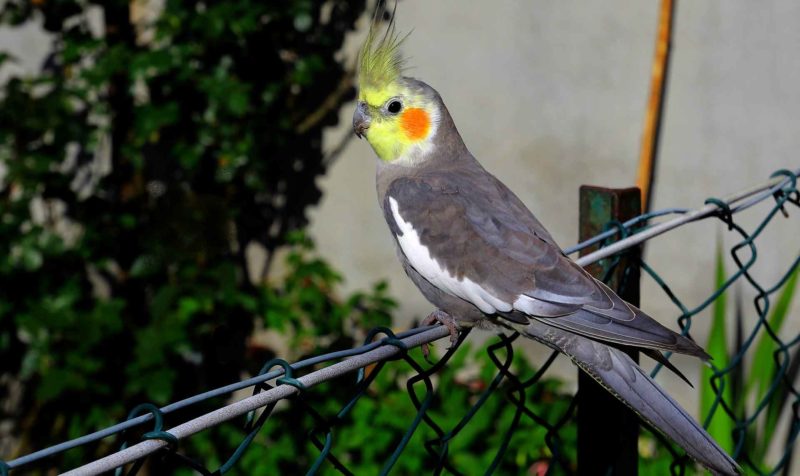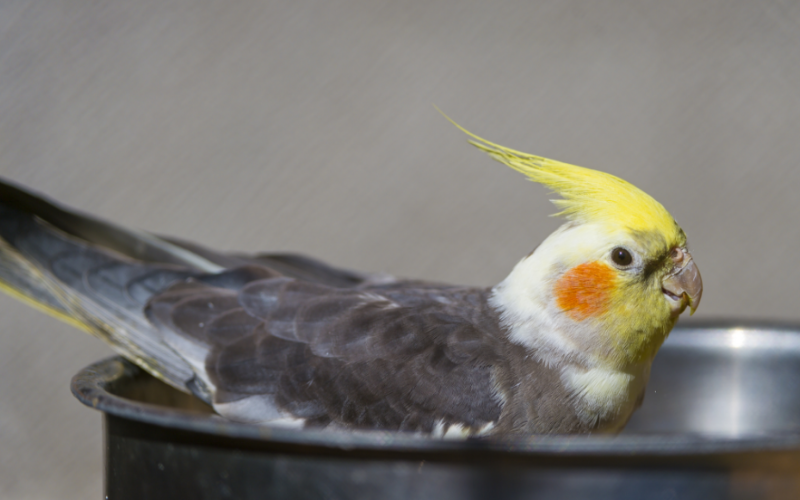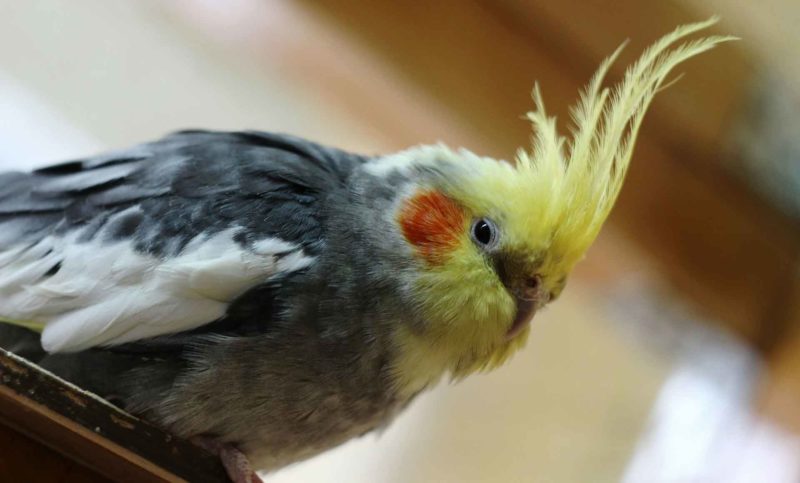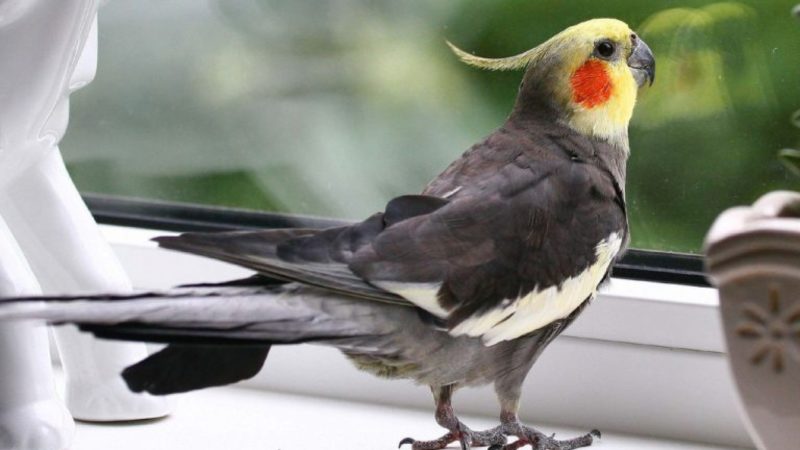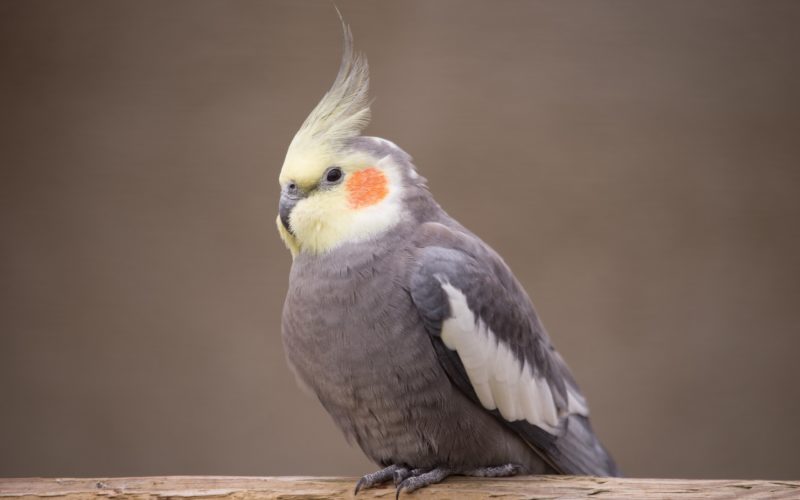Among lovers of domestic decorative birds, Corella parrots are especially popular. These charming creatures will become a real decoration of the home. What care rules should be followed so that the feathered pet is comfortable and cozy?
Material Content:
Description of the Corella Parrot
Corella is a bird originally inhabited in Australia. She is also called a nymph - so she was christened by European animal lovers.
The Korells began to settle in Europe around the end of the 19th century, and already in the middle of the 20th century a law was introduced in Australia that prohibited the parrot from being transported from the mainland. Lovers of these birds had to acquire individuals born in captivity.
In the open spaces of the Soviet Union, this parrot appeared in the middle of the twentieth century and immediately gained wide popularity.
The size of Corella does not exceed the pigeon: the body length of the bird is about 30 cm, half of them fall on the tail. The weight of the parrot is about 100 g. A distinctive feature of these birds is a long crest on the dark spot, which also distinguishes cockatoo parrots. Specialists argued for a long time whether Corella belongs to the parakeets, or whether it is a member of the cockatoo family. Over time, it was found that these birds combine the characteristic features of both families. Thus, Corellas were assigned to an independent species of parrots.
These birds can be gray, black, pearl, light brown and dark yellow. Very popular are individuals with the so-called lutino color, which is characterized by a bright yellow tone of feathers in combination with the red eyes of a bird.
Corella parrots fly well and can travel long distances, reaching places unusual for these birds to live. Their migration is often associated with a lack of water or food. In the wild, these parrots live in forests covered with small vegetation, or in eucalyptus groves.
Corellas are rather timid on the ground, however, sitting on trees, they can let a person close to them. In nature, they eat plant seeds and insect larvae.
How to distinguish between a female and a male
The male and female Corella have a number of differences that can be tracked by carefully observing the parrots:
- Color. Males are painted more brightly. Crest and their head are yellow, cheeks are red-orange. Feathers of the "male parrot" have a pearl-steel shade, the females are painted in a dirty gray color.
- Crest form. For males, this decoration is narrower, bends up, while for females it is wider.
- Tail width. It is narrower in males, wider in females.
- The nature of the movements. Ladies Corella during their movement spread their legs more widely.
You can also track gender differences by observing the behavior of parrots. Adult Corellians sing rather loudly and like to bang their beaks on the floor. Ladies are more restrained.
Bird conditions
Corelli can be kept alone or in flocks in an aviary or cage. Corell's parrots living in a cage must be allowed to fly. The size of the "home" should be approximately 100x40x60 cm - these parameters are suitable for keeping one or two birds. It is better to choose a cage with horizontal bars, so that the pet can climb on it.
Corell’s home must have a pull-out tray, which will simplify the owner’s cleaning, which does not bother the pet. The cage should not interfere with the movement of exotic birds. The enclosure should be quite spacious so that the bird can fly within it.
In the process of building an enclosure, it is better to use environmental materials, but it is worth abandoning wooden structures, since the Corella nymph is able to gnaw them.
Parrots need toys that should not consist of small parts. Corells are suitable ropes, on which birds can climb, as well as tree branches for stripping. They like parrots and take water procedures, so it’s permissible to install a bath in the house.
In order to breed Corell, you should organize a nest in the form of a wooden house 25x25x35cm.
Freshly brought home parrots are placed in a separate cage for adaptation. Quarantine should last about a month and if the birds remain healthy, they are allowed to be moved to a common dwelling. Neglecting this rule increases the risk of introducing an infection that is detrimental to all other inhabitants of the cell or aviary.
The subtleties of caring for a winged pet
The habitat of the Corella nymph should be fenced off from drafts. These birds are thermophilic, and therefore temperature jumps can provoke their disease or even death.
The suitable temperature for keeping parrots at home is 22 - 24 ° C.
In winter, air dryness may occur due to operating heaters. For this reason, indoor humidifiers should be used. Bird cages, toys, feeders and drinking bowls are washed weekly, systematically changing the tray filler.
Corellas are birds that tolerate home living well and hatch babies here. During the mating season, the male calls his girlfriend into the nest, luring her with tweets and singing. Courts can last from a week to a month. Then the female lays eggs, 1 piece per day. In total, the clutch numbers about 5 eggs, which parrots incubate alternately. Parrots also take care of the children that hatched after 3 weeks.
Within 2 days after hatching, the chicks are selected from the nest, and if this does not happen, they need help. Newborn babies have pinkish skin and yellow plumage.If the chick is bluish in color, most likely the cause is hypothermia and it needs to be warmed.
Nymphs are very attentive parents who do not tolerate outsiders in the process of raising their children.
Parents feed the cubs in turn. When the adult Corelli are absent from the nest, the house needs to be cleaned by removing debris and filling up clean sawdust. This procedure should be carried out promptly in order to avoid parental anxiety. Parrots feed the chicks up to two months of age, after which they are quite ready for independent life.
Tip. There are cases when adult Corella began to pluck the chicks. At this point, they are able to injure the kids. In such cases, young growth should be resettled in a separate dwelling.
Corella Parrot Diet
When purchasing a chick, it is important to remember that monthly individuals need feeding every 5 hours. Each feeding includes 20 ml of a mixture, for example, a special porridge. A month later, the young parrot is able to feed itself, while one portion of it should be 30 g. The diet of the feathery includes a mixture of millet, oats, sunflower seed. In addition to the feeder, a container with mineral additives and a drinking bowl should be placed in the cage.
Experts recommend choosing balanced high-quality feeds for Corella, for example, Vitacraft for Corell, Prestige and so on. The feed should contain wheat, oats, millet, corn, the inclusion of minerals, yeast, nuts, oils is permissible.
Pet life span
In nature, the lifespan of nymphs rarely exceeds 10 years. This is due to the need to protect against predators and obtain food for themselves and offspring.
In captivity, provided that the parrot is comfortable, he can live 15 to 20 years. Sometimes house nymphs survived to 25 years or more.
Difficulties and difficulties in keeping
When acquiring Corella, the owner must remember some of the nuances associated with this bird:
- People who love silence should not make a nymph, because these parrots are quite noisy and noisy.
- Corellas are very active and strive to taste everything: money, curtains, wallpapers, pencils, etc.
- These parrots are not cleanliness, so you should prepare for the fact that garbage will always be scattered in the cage and around it. In addition, Corells like to throw off the feeder.
- The nymph is able to bite quite strongly, this should also be remembered when choosing a bird.
The birds in the pair will never speak.
Corella does not like loneliness, so when going on a trip, you should agree with friends or relatives about caring for the pet.
How to tame a feathered friend
Nymphs can be tamed quite easily, it is better to start doing this from a very young age, almost from the moment of hatching.
- In order to reduce the training period, as well as to exclude the possibility of a pet leaving the window, parrots often cut their wings.
- Taming a nymph to her hands should be methodical and patient. You can take them in the palm of your hand already from the age of two weeks, without forgetting to wash your hands. First, babies are held in their hands for no longer than 15 minutes. Gradually, provided the birds feel well, the contact time can be increased by conducting a dialogue with the chicks and stroking them.
- As for onomatopoeia - budgies in this sense are more trained. However, Corella speaks much more legibly and clearly, although she does not have pronounced abilities for “languages”. Under the condition of systematic classes, it is real to teach a pet words and even whole sentences, phrases. In addition, in the learning process, these parrots are even able to whistle simple melodies.
Corellas are bright, beautiful and curious creatures. When getting this bird, the owner should understand that it is acquiring a noisy, sometimes not very neat, but very charming and entertaining pet. Nymphs are tame, but to begin this process should be as early as possible - adults are more difficult to train.



